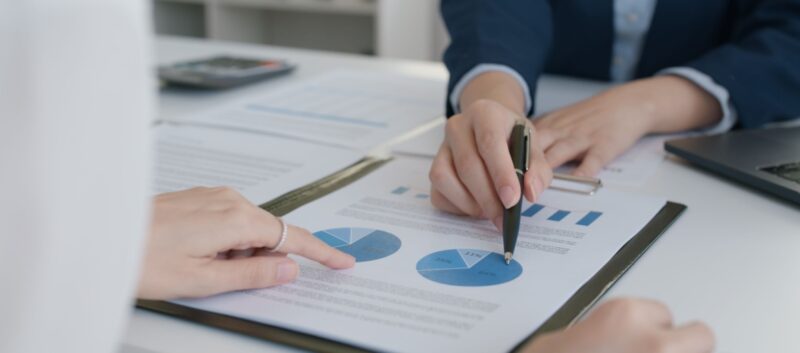A combination of rising rates and panic ahead of the current government’s first Autumn Budget has led to HRMC collecting a record amount in Capital Gains Tax (CGT) towards the end of 2024.
According to a report in the Telegraph, between July and November 2024, CGT generated more than £1 billion for the government – more than a £200 million increase when compared to the same period in 2023.
The rise in CGT had been associated with uncertainty in the lead-up to the government’s Autumn Budget. Speculation that tax rates would rise sharply, and tax breaks would be cut, led to some investors, who worried they might face a much larger tax bill if they delayed decisions, selling assets.
As CGT is a tax that’s paid on the profit you make when selling certain assets, this panic increased the amount of CGT collected.
While the Labour government did unveil changes to CGT during the Autumn Budget, including a rise in tax rates, they weren’t as drastic as some investors feared. Following the Budget on 30 October 2024:
- The basic rate of CGT increased from 10% to 18%.
- The higher rate of CGT increased from 20% to 24%.
The increase could mean the amount of CGT collectively paid continues to rise. Indeed, according to the Office for Budget Responsibility, the changes could increase CGT revenue by around £1 billion by 2029/30. However, it also assigned the figure a “high” uncertainty rating as it can be difficult to judge behavioural responses.
If you could face a CGT bill in the future, read on to discover some practical steps you might take to reduce your liability.
1. Consider your overall tax position
Rather than looking at your CGT liability in isolation, reviewing it alongside your overall tax position and wider financial plan could be useful.
For example, if you’re a basic-rate taxpayer and the profits you make when selling an asset are below the higher-rate Income Tax threshold (£50,271 in 2025/26) when added to your other income, you could pay the lower CGT rate. So, if your other sources of income are flexible, you might wait to sell assets until you’d potentially benefit from the basic rate of CGT.
If you plan to delay selling assets, keep in mind the value of them could change.
2. Use your Capital Gains Tax exemption
Each tax year, you can make a certain amount of profit before CGT is due. This is known as the “Annual Exempt Amount”.
In 2025/26, the Annual Exempt Amount is £3,000 for individuals. Crucially, you cannot carry this exemption forward into a new tax year if you don’t use it.
Spreading asset disposals across multiple tax years to use the Annual Exempt Amount could help you reduce your overall tax bill.
3. Pass assets to your spouse or civil partner
You can usually transfer ownership of assets to your spouse or civil partner without facing a tax bill. As many tax allowances and exemptions are individual, passing assets to your partner could be useful.
For instance, if you’ve already used your Annual Exempt Amount in the current tax year, you might transfer ownership of an asset to your partner before you dispose of it.
Likewise if your spouse or partner pays a lower rate of Income Tax than you do, they would benefit from a lower rate of CGT.
4. Use tax-efficient wrappers when investing
If you could face a CGT bill when you sell investments, you might want to consider using tax-efficient wrappers, such as ISAs and pensions.
In 2025/26,both you and your spouse or partner can deposit up to £20,000 into ISAs. If you choose to invest in a Stocks and Shares ISA, the returns you make won’t be liable for CGT.
If you’re investing for the long term, a pension could also be suitable. Again, returns from investments held in a pension are not liable for CGT. In 2025/26, you can usually add up to £60,000 (your “Annual Allowance”) to your pension before you could face additional tax charges.
However, the amount you can tax-efficiently add to a pension could be as low as £10,000 if you’ve already taken a flexible income from your pension or if your adjusted income is more than £260,000 a year. If you’d like to understand your pension Annual Allowance, please get in touch.
Remember, you cannot normally access the money held in a pension until you’re 55 (rising to 57 in 2028). So, it’s important to weigh up your reason for investing and your wider financial circumstances before you increase pension contributions.
5. Offset your losses
Making a loss when selling assets can be disappointing, but it could be used to reduce a CGT bill.
You can often offset losses against the gains you’ve made, which may lead to a lower CGT bill and potentially mean you pay the lower CGT rate. In some cases, you may also carry losses forward to offset future profits.
If you plan to offset losses against your gains, it’s important to keep accurate records. You will also need to register losses with HMRC by completing a tax return.
6. Work with a financial planner
Making your CGT liability part of your wider financial plan could help you identify steps you might take to reduce a potential bill in a way that aligns with your long-term goals.
If you’d like to talk about your own arrangements, please get in touch.
You can contact us by email or, if you prefer to speak to us, you can reach us in the UK on +44 (0) 208 0044900 or in Hong Kong on +852 39039004.




 Production
Production